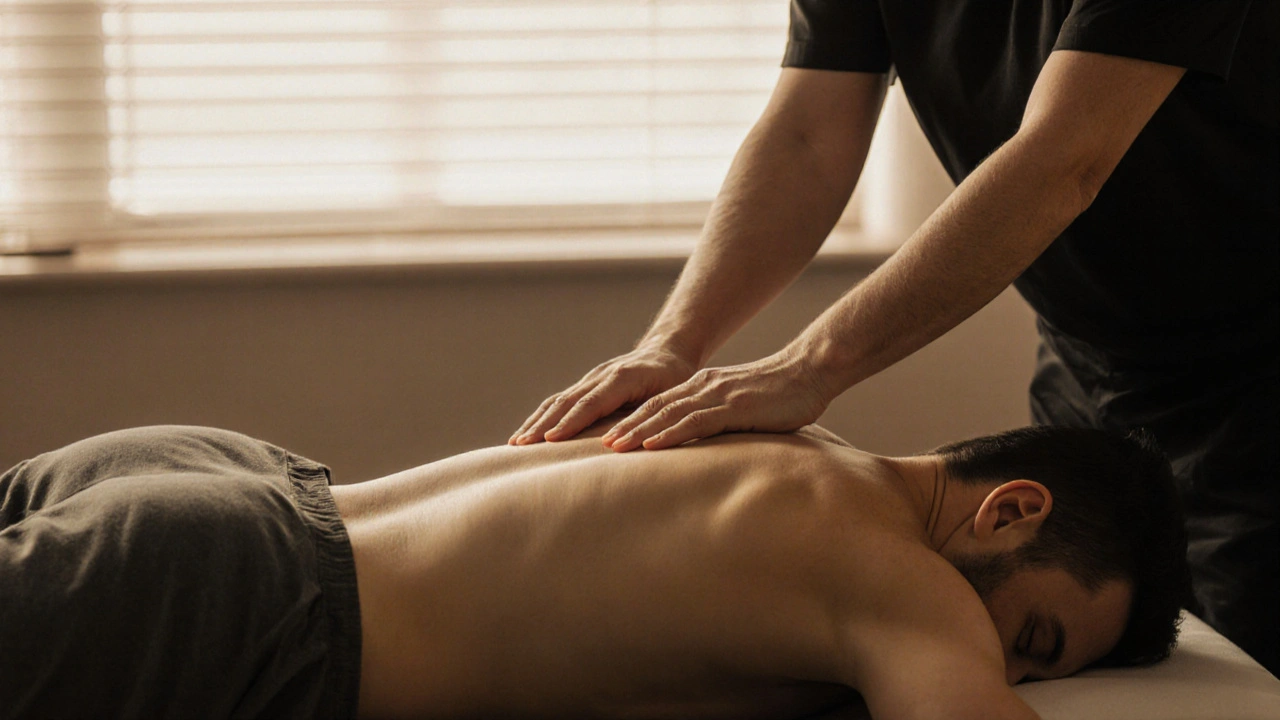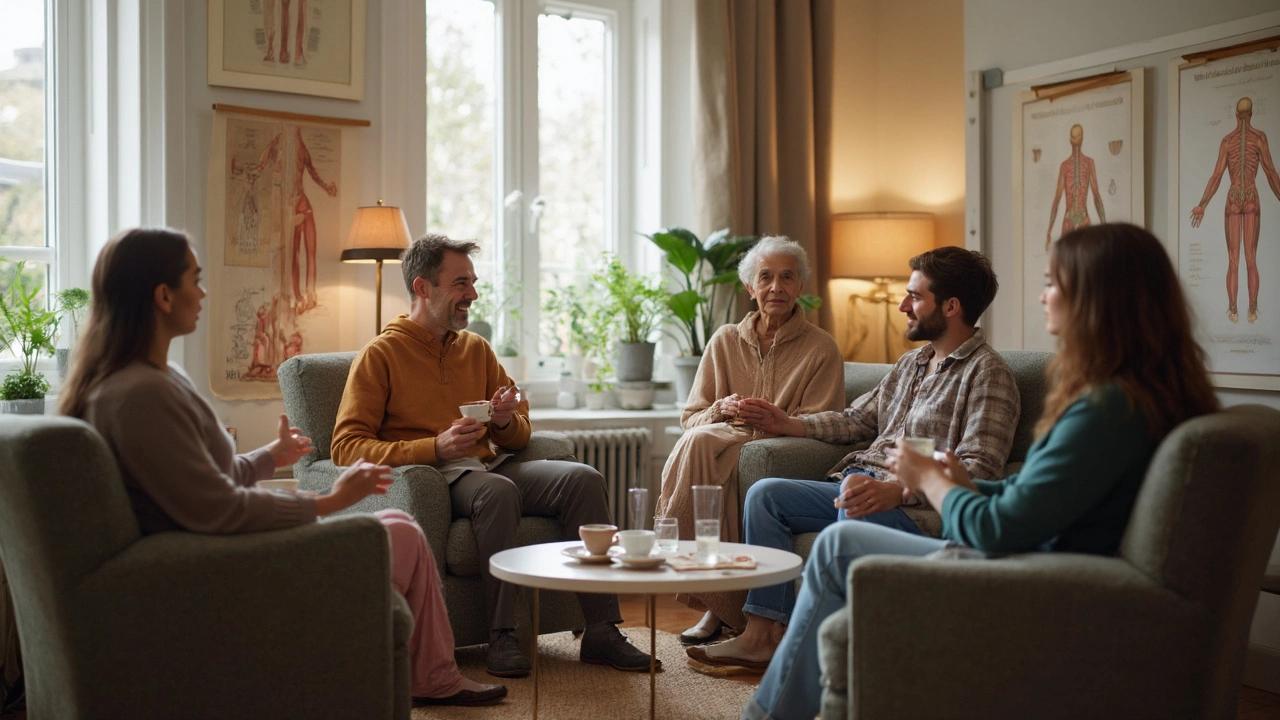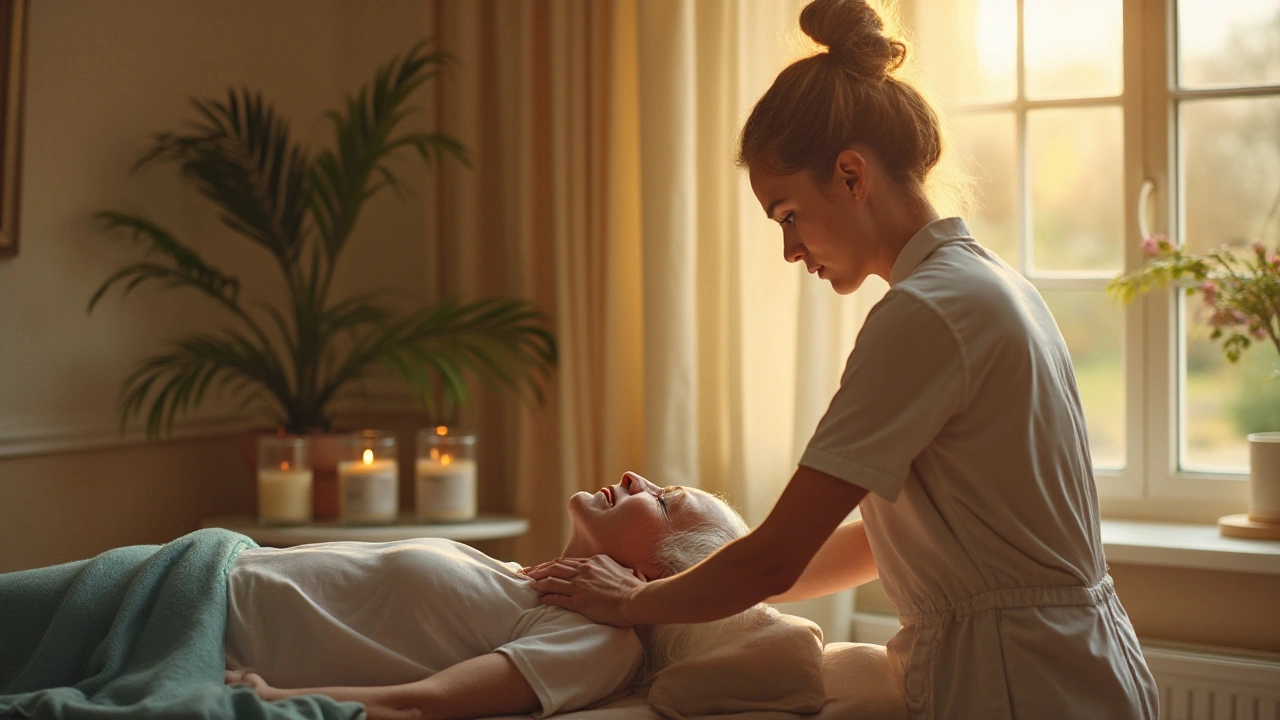Pain Management: Simple, Practical Massage and Bodywork Tips
Living with pain changes how you move, sleep, and even think. This page collects clear, useful options you can try right away: massage styles, gentle bodywork, and quick self-care moves. Pick what fits your pain type and lifestyle, and use these suggestions to get faster relief and better movement.
First, figure out the pain. Is it sharp and sudden, dull and constant, or a tight knot that flares after activity? Sharp new pain needs a doctor. Dull, chronic pain often responds well to ongoing bodywork like trigger point massage, Rolfing, or Ortho-Bionomy. Muscle knots and tight spots are great targets for trigger point work and acupressure—simple, direct tools that many people can use at home or in a short clinic visit.
What you can try at home
Acupressure: press firmly on sore spots for 30–90 seconds, breathe slow, repeat a few times a day. It can reduce headaches, neck tension, and lower-back tightness.
Self-massage for trigger points: use a tennis ball against a wall or foam roller on the floor. Find the tender spot, hold pressure until tension eases, and move slowly. Don’t overdo it—mild discomfort is okay, sharp pain is not.
Mindful movement: Feldenkrais and gentle Feldenkrais-style exercises teach small, controlled motions that retrain how your nervous system controls muscles. Short daily sessions can increase range of motion and cut pain over weeks.
Heat and cold: use heat to relax tight muscles before gentle stretching. Use ice after intense flare-ups to reduce swelling and sharp pain.
When to book a session with a pro
If pain limits daily tasks, doesn’t improve after a week of home care, or returns often, see a qualified therapist. Look for professionals who specialize in your issue—trigger point therapists for muscle knots, Ortho-Bionomy or Hellerwork for structural pain, Rolfing for postural shifts, or palliative massage for serious illness support.
Ask a therapist about session goals, average number of visits, and whether they coordinate with your doctor. A good therapist will show you simple at-home moves to maintain gains between sessions.
Surgical options exist too, like contractual tendon release for severe joint stiffness. Surgery can help in specific cases, but try conservative bodywork and physical rehab first unless a doctor advises otherwise.
Small habits matter: sleep on a supportive pillow, sit with feet flat and hips back, and take short movement breaks during long sitting periods. Combine these habits with targeted bodywork and you often cut pain faster than with one approach alone.
If you’re unsure where to start, try one easy change for two weeks—short acupressure routines, a single session of trigger point therapy, or daily 10-minute Feldenkrais practice. Track results and adjust. Pain management is a process, not a single fix. These practical steps help you make steady, real progress without guesswork.

Myofascial Release Therapy: How It Relieves Chronic Pain and Why It’s Gaining Traction
Myofascial release therapy targets tight connective tissue to relieve chronic pain that other treatments miss. Learn how it works, who benefits most, and how to find a qualified therapist in Australia.

Amma Massage: The Answer to Your Back Pain
This article digs into Amma massage and how it can help with stubborn back pain. It explains what Amma massage is, why it works for back tension, and what you can expect during a session. You’ll get practical tips for choosing the right practitioner and find out what people are saying about the real-life results. If you’re tired of back pain, this guide shows if Amma might be the solution you need.

Trigger Point Massage: The Secret to Relieving Muscle Pain
Discover how trigger point massage can target stubborn muscle pain and tension fast. Get the low-down on what trigger points really are, why they hurt so much, and what you can do about them. Learn practical tips for finding your own trouble spots and using simple massage techniques to get lasting relief. Understand the science without the jargon, and pick up some tricks that you can use right away at home. Whether you sit at a desk or crush it at the gym, this guide makes muscle relief totally doable.

The Power of Craniosacral Therapy in Modern Pain Relief
Craniosacral therapy is gaining attention as a transformative approach to pain management. This gentle, hands-on method focuses on relieving tension in the central nervous system, which can promote overall well-being. By fostering a deep sense of relaxation, it helps alleviate chronic pain and supports the body's natural healing processes. As more people seek alternative therapies, craniosacral therapy is becoming a cornerstone in holistic health strategies.

Enhancing Comfort with Palliative Massage for Pain Relief
Palliative massage offers a gentle approach to alleviate pain and improve comfort for individuals dealing with serious illnesses. This form of therapy focuses on enhancing the quality of life through the soothing power of touch. By addressing both physical and emotional pain, palliative massage provides relief and relaxation in a compassionate manner. It integrates various techniques to accommodate individual needs and preferences, making it a versatile tool in comprehensive palliative care.
Categories
- Health and Wellness (148)
- Alternative Therapies (86)
- Massage Therapy (40)
- Travel and Culture (15)
- Beauty and Skincare (9)
- Holistic Health (8)
- Health and Fitness (5)
- Spirituality (5)
- Other (2)
- Personal Development (2)



